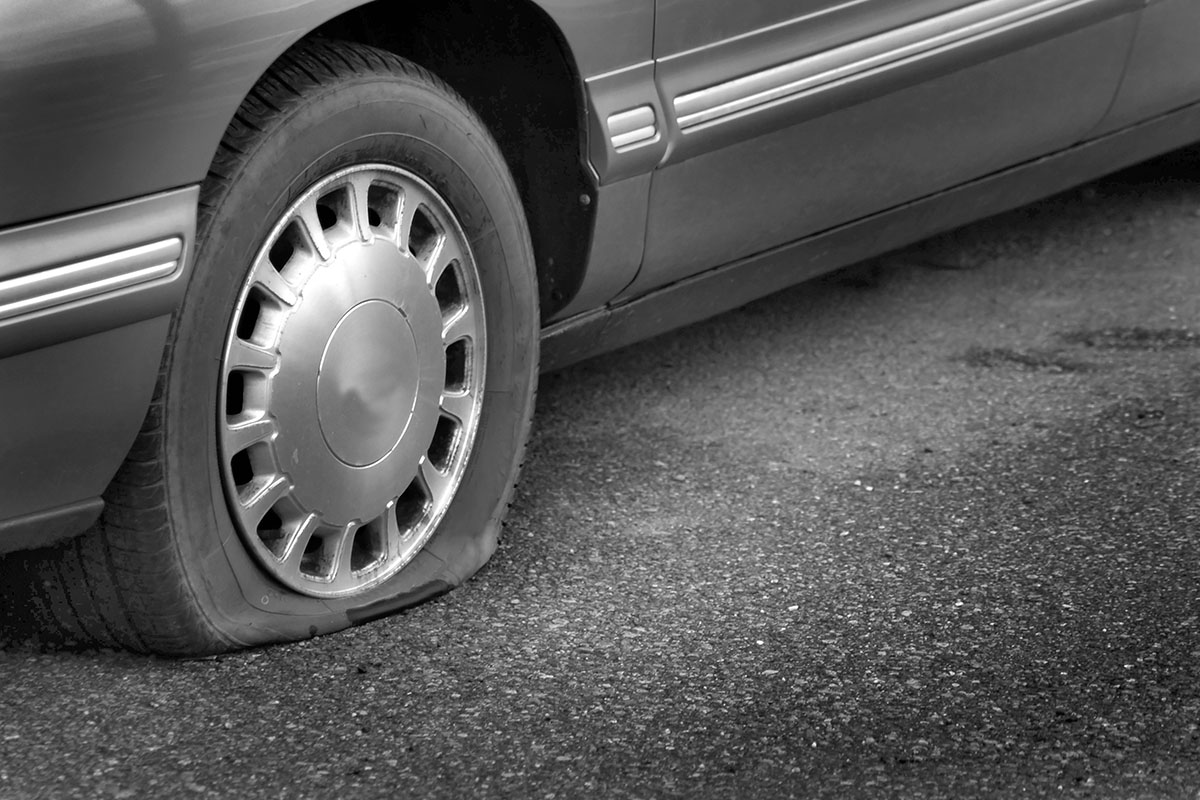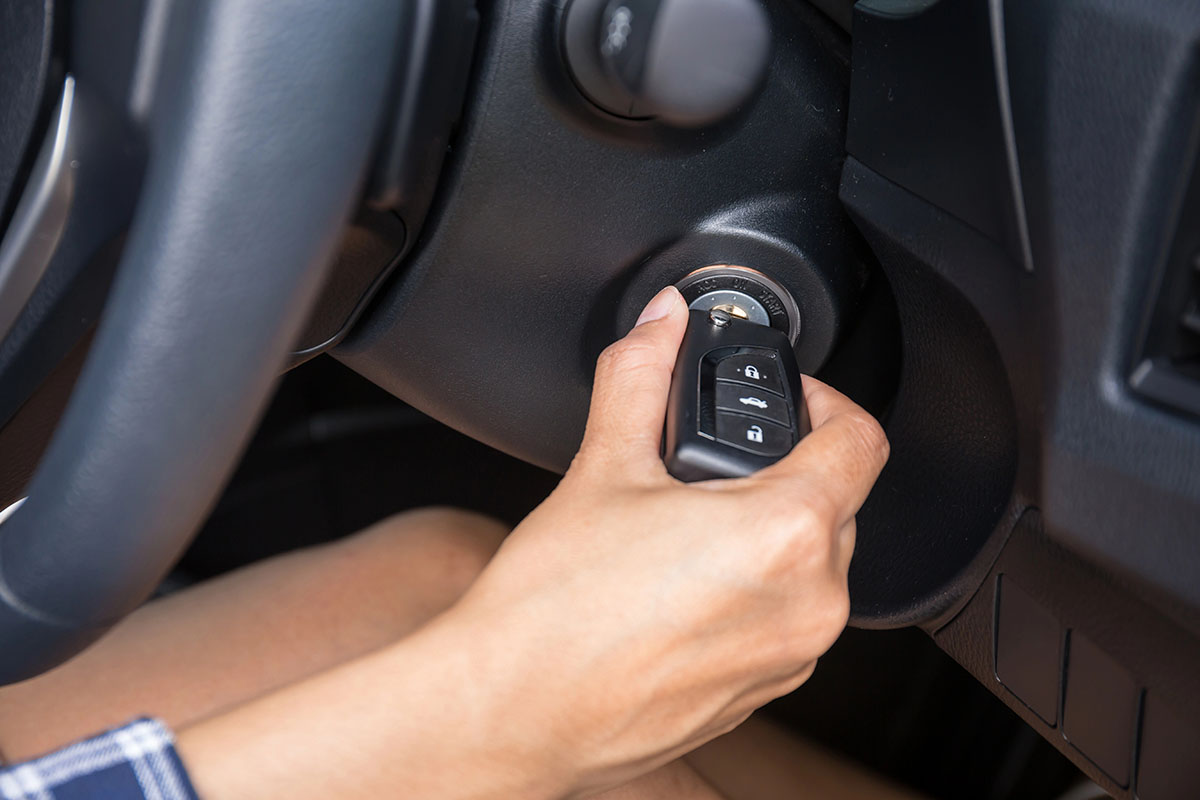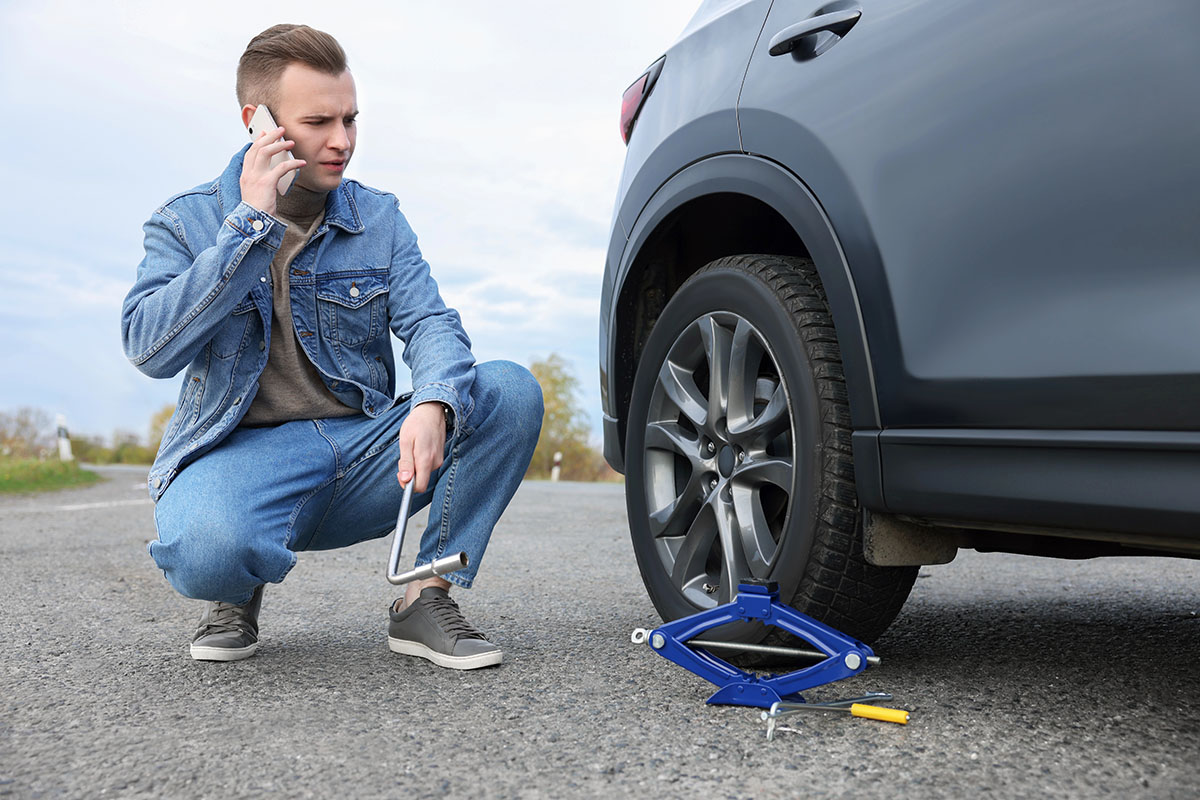Knowing how to handle a flat tire is an essential skill for every driver. A flat tire can occur anytime and anywhere, often leaving you stranded when least expected. Understanding how to change a flat tire not only saves time but also prevents unnecessary costs associated with roadside assistance.
Importance of Knowing How to Handle a Flat Tire
- Time-saving: Changing a tire yourself means you’re back on the road quickly.
- Cost-effective: Avoiding towing fees or service charges can save you money.
- Empowerment: Gaining confidence in handling car issues can enhance your driving experience.
Common Scenarios Where Flat Tires Occur
- Road Hazards: Potholes, debris, or sharp objects can puncture tires unexpectedly.
- Wear and Tear: Aging tires may suffer from tread wear, leading to blowouts.
- Temperature Changes: Sudden shifts in weather can impact tire pressure, increasing the risk of flats.
Understanding these factors prepares you for potential challenges on the road. This guide will ensure you are equipped to manage a flat tire confidently and safely.
Understanding Flat Tires
Recognizing the signs of a flat tire is crucial for your safety and vehicle performance. Here are common indicators:
- Vibrations or thumping noises while driving
- An underinflated spare tire that appears noticeably flatter than the others
- Visible bulges, cracks, or other damage to the tire sidewall
Understanding the causes of flat tires can help prevent future occurrences. The primary culprits include:
- Punctures from sharp objects like nails or glass
- Blowouts caused by excessive heat, underinflation, or wear and tear
- Issues with the valve stem, which can lead to air leaks
Incorporating a few preventive tips for flat tires into your routine will enhance safety. Consider these practices:
- Check tire pressure monthly; proper inflation reduces the risk of flats
- Inspect tread depth regularly to ensure even wear and sufficient grip
- Avoid driving over sharp objects or potholes that could damage tires
- Rotate tires according to manufacturer recommendations to promote even wear
Safety First: Preparing to Change a Flat Tire
Handling a flat tire requires careful preparation to ensure your safety and that of other drivers. Follow these essential safety tips for changing a tire:
- Find a Safe Location: Pull over to a flat, stable area away from traffic. Look for well-lit spots if you are on the road after dark. Avoid soft ground to prevent the jack from sinking.
- Engage the Parking Brake: Secure your vehicle by engaging the parking brake. This prevents any accidental rolling while you work.
- Use Hazard Lights: Activate your hazard lights to alert other drivers of your situation. This visibility is crucial, especially on busy roads.
- Wear Reflective Clothes: Donning reflective clothing increases your visibility to passing vehicles. Consider wearing gloves for hand protection as well.
Taking these precautions can significantly reduce the risk of accidents while changing a tire. Being prepared allows you to focus on the task at hand, ensuring a smoother process and enhancing your safety on the road.
Essential Tools for Changing a Tire
Changing a tire requires specific tools to ensure safety and efficiency. Here’s a list of necessary tools:
- Spare tire: A temporary solution that allows you to drive until you can replace the flat.
- Car jack: Used to lift the vehicle off the ground, enabling access to the tire.
- Lug wrench: Essential for loosening and tightening lug nuts.
- Wheel wedges: Prevents the vehicle from rolling while you’re working.
Locating These Tools
Finding these tools in your vehicle is straightforward:
- Check the trunk or under the floor mat for the spare tire and jack.
- The lug wrench is often stored alongside the spare tire.
- Wheel wedges may be kept in a side compartment or with emergency gear.
Step-by-Step Guide to Changing a Flat Tire
Step 1: Loosen the Lug Nuts
Start the tire-changing process by loosening the lug nuts. This initial step is crucial for safely removing the flat tire. Follow these instructions:
- Position Yourself: Stay at a comfortable angle beside the flat tire to access the lug nuts easily.
- Use the Lug Wrench: Take your lug wrench and place it over a lug nut. Ensure that you are facing the wrench handle in a direction that allows for counterclockwise rotation.
- Loosening Technique:
- Apply pressure on the wrench handle, pushing downwards to turn the nut counterclockwise.
- If the lug nuts are particularly tight, you may need to use your body weight or a larger tool for leverage.
- Follow a Pattern: It’s best practice to loosen all lug nuts slightly before removing them completely. This prevents any stress on the wheel and makes it easier to remove each nut without resistance.
- Check for Any Issues: While loosening, pay attention to any unusual sounds or resistance which might indicate other issues with your wheel.
- Complete Loosening: Once all nuts are loose, go ahead and fully unscrew them and set them aside in a safe place where they won’t get lost.
Step 2: Lift the Vehicle
To lift the vehicle safely, you need a car jack. Identify the jack point under the frame near the flat tire; this is crucial for stability during the lift. Follow these steps:
- Position the car jack beneath the designated jack point.
- Pump the jack handle until the flat tire is approximately 6 inches off the ground.
- Ensure that the vehicle is stable before proceeding.
This step is essential in your journey to changing a flat tire effectively. With the lug nuts loosened counterclockwise, you’re now ready to remove the flat tire and install your spare.
Step 3: Remove the Flat Tire
With the vehicle securely lifted, it’s time to change a flat tire. Follow these steps to remove the flat tire effectively:
- Unscrew lug nuts completely: Use the lug wrench to turn each nut counterclockwise. Ensure you remove them entirely rather than just loosening them.
- Pull the flat tire off: Once the lug nuts are removed, grasp the tire with both hands and pull it straight toward you. It may require a little wiggle if it’s stuck but avoid using excessive force.
Step 4: Install the Spare Tire
After successfully removing the flat tire, the next task is to install the spare tire. Follow these steps:
- Position the Spare Tire: Lift the spare tire and align it with the wheel hub. Ensure that the holes in the spare tire match up with the wheel bolts.
- Mounting: Carefully slide the spare tire onto the wheel hub. Push it firmly into place until it sits flush against the hub.
- Hand-Tighten Lug Nuts: Begin to hand-tighten each lug nut onto the wheel bolts. This secures the spare tire and prevents it from wobbling.
This step is critical in changing a flat tire as it ensures a proper fit before lowering the vehicle back to the ground.
Step 5: Lowering the Vehicle and Final Checks
Once the spare tire is securely in place, it’s time to lower the vehicle.
Lower the Car Using the Jack:
- Gently pump the jack to lower the car until the spare tire just touches the ground.
- This ensures stability before tightening.
Tighten Lug Nuts in Star Pattern:
- Use your lug wrench to tighten each lug nut by turning them clockwise.
- Always follow a star pattern to ensure even pressure across the wheel.
Final Checks:
- After fully lowering the vehicle, double-check all lug nuts for tightness.
- Confirm that the spare tire is properly inflated as per your vehicle’s specifications.
What to Do After Changing a Tire
Changing a tire is only part of the process. After successfully installing the spare tire, take these important steps:
- Check Spare Tire Pressure: Use a tire pressure gauge to ensure the spare tire is properly inflated. Most temporary spares require about 60 PSI for optimal performance.
- Drive Carefully: Keep your speed below 50 mph when using a spare tire. This ensures safety and prevents damage.
- Visit a Professional Service Center: Schedule a visit to have your flat tire inspected. A professional can determine if it can be repaired or if it needs replacement.
- Monitor Performance: Pay attention to how your vehicle handles after changing the tire. If you notice vibrations or instability, seek expert assistance immediately.
These actions help maintain vehicle safety and performance while ensuring your tire issues are properly addressed.
Common Mistakes When Changing a Tire
Changing a tire may seem straightforward, but several common mistakes can lead to complications. Being aware of these pitfalls ensures a safer and more efficient process.
1. Jacking on Soft Ground
Using a jack on unstable surfaces can cause the vehicle to tip over. Always find solid ground.
2. Skipping Wheel Wedges
Not placing wheel wedges can allow the vehicle to roll unexpectedly. This is crucial for safety during the tire change.
3. Over-tightening Lug Nuts
Excessive force can strip the threads or damage the rim. Follow your vehicle’s manual for proper torque specifications.
4. Neglecting to Check Spare Tire Pressure
Driving on an underinflated spare tire increases the risk of another flat. Always check pressure before installation.
5. Failing to Secure Tools
Leaving tools scattered around can lead to accidents or losing essential items. Keep everything organized and close at hand.
Maintenance Tips for Avoiding Flat Tires
Preventive tips for flat tires can save you from unexpected roadside troubles. Regular maintenance is crucial for tire longevity and safety. Here are essential practices:
- Monthly Tire Pressure Checks: Use a reliable gauge to monitor pressure when tires are cold. Proper inflation enhances handling and fuel efficiency.
- Inspect Tread Depth: Check for wear using the penny test. Insert a penny into the tread; if you see Lincoln’s entire head, it’s time for new tires.
- Avoid Sharp Objects: Steer clear of potholes, road debris, and other hazards that may cause punctures or damage.
- Regular Tire Rotation: Follow your vehicle manufacturer’s guidelines for rotating tires. This helps ensure even wear and extends tire lifespan.
- Professional Inspections: Visit a trusted service center at least twice a year for comprehensive tire checks.
Implementing these practices reduces the risk of flat tires significantly, promoting safer driving.
Staying Ahead of Tire Troubles: Your Road to Confident Driving
Knowing how to deal with a flat tire is an important skill for every driver. By following these outlined steps, you can save time and money while boosting your confidence on the road.
Here are some key points to remember:
- Safety: Always prioritize safety when changing a tire. Choose a well-lit, stable location and wear reflective clothing.
- Preparedness: Keep your vehicle equipped with the necessary tools—spare tire, car jack, lug wrench, and wheel wedges.
- Regular Maintenance: Conduct monthly checks on tire pressure and tread depth to prevent unexpected flat tires.
Using automotive knowledge resources can help you learn more about tire maintenance and repair. Being proactive about taking care of your vehicle, such as getting regular inspections at trusted service centers, will make it less likely for you to experience flat tires.
Frequently Asked Questions About Flat Tires
What are the common signs of a flat tire?
Common signs indicating a flat tire include vibrations while driving, a noticeable decrease in tire pressure, and the appearance of an underinflated spare. If you notice any of these symptoms, it’s essential to check your tires immediately.
What causes flat tires?
Flat tires can be caused by various factors including punctures from sharp objects, blowouts due to overinflation or wear, and issues with valve stems. Regular inspections can help identify potential problems before they lead to a flat.
What safety precautions should I take when changing a flat tire?
When changing a flat tire, ensure you pull over to a safe location away from traffic, engage your parking brake, and turn on your hazard lights. Wearing reflective clothing is also advisable to increase visibility.
What tools do I need to change a flat tire?
Essential tools for changing a flat tire include a spare tire, car jack, lug wrench, and wheel wedges. Familiarize yourself with the location of these tools in your vehicle before an emergency occurs.
Can you provide a step-by-step guide on how to change a flat tire?
Yes! To change a flat tire:
- Loosen lug nuts counterclockwise
- Lift the vehicle using the car jack
- Remove the flat tire by unscrewing the lug nuts completely
- Install the spare tire by aligning holes with wheel bolts
- Lower the vehicle and tighten lug nuts in a star pattern for safety.
What should I do after changing my tire?
After changing your tire, it’s important to visit a professional service center to ensure everything is properly installed. Check the pressure of your spare tire regularly to maintain optimal performance.







